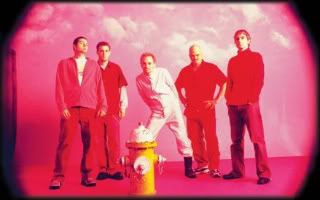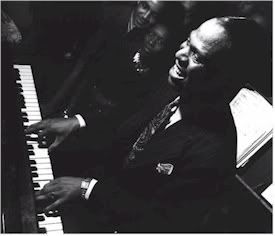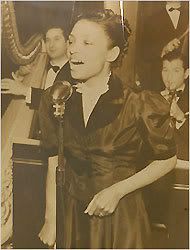
from Buzz Poets.com
In 1997, a flashy, trashy band of rockers hit the Pittsburgh scene with a high energy, alt-rock style that was a cross of ska, rap, pop, and punk rolled into one fireball.
Area fans looking for something different from the usual classic rock/R&B sound that the city thrived on embraced the group. They were the Buzz Poets.
Ron "Tripper" Garrison (guitar & vocals), a Texas transplant, hooked up with locals Phil MacDowell (guitar), Todd Demont (bass, guitar, keyboard) and Dave Robertson (drums) to form the band.
They thought their material was cutting edge enough to name themselves after the avant garde beatnik generation of the 1950's, although in truth their early tunes were more noted for scatology than lyric content and their live shows featured crotch rocking antics on stage, ala Mick Jagger.
The plural at the end of the name was intentional, because the band collaborated on their songs as a whole, not depending on a single writer as so many other groups did, although Garrison and MacDowell did the heavy lifting.
And oddly, to a man, the group cited the clean-cut Beatles as their musical muse.
In 1998, they made their move to break out when they won the Graffiti Rock Challenge, and were a mid-Atlantic semifinalist in the Discmakers Music World Series. The performances created a surging positive buzz for the band.
After selling 1,000 copies of their first self-released album, "Planet Buzz," they spent their prize money on a second pressing, changing one song, and recording some new material to jump start future projects at McKeesport's Soundscape Studio.
In January of 1999, they won the Ernie Ball Music Man Battle of the Bands. Some 5,000 groups competed in the guitar string maker's national bash, seeking their fame and fortune.
The contest finale was held at the Los Angeles Hard Rock Cafe during the music industry convention, and everybody who mattered was there. Ahmet and Dweezil Zappa were judges, along with a panel of music biz suits.
The shows put their act in front of dozens of A&R reps from indie & major labels and big-time booking agents, showcased them for management companies and gave them a face for the local and national media. Drinking tequila and horsing around backstage before the gig, the Poets put on the performance of their life in LA.
MacDowell recalled that "Everything went right. I think it was one of the best shows so far in our career." But like the tale of so many Pittsburgh acts, the sizzle never turned into steak, even as they opened for groups like Weird Al, 311 and Blink 182.
Gaber tried to both manage and play, and between what they were looking for in creative control and having no one to represent them full-time to the industry, it never happened. It didn't help that they drew from a number of musical genres, and never established a distinct pigeon hole that the suits look for in a band.
The Buzz Poets were a hard-working and popular road act, and often played 200 or more gigs a year. It's hard to fault Gaber when most of his time was spent just booking dates.
They instead took a stab at the underground route to success, pushing their music through college & FM radio, P2P and file downloads, plus word-of-mouth from their live shows. It got them a name, some play, and a reputation, but not a contract.
The Poets cut more LP's and EP's, adding "Alcohol Abuse Live," (1999) "Pretzel Sex," (2000) "Buzz Poets" (2001) and "Two Sides" (2003) to their discography.
Their last two efforts showed a more mature side of the band after releasing what was basically rowdy and sexually loaded frat house stuff in their earlier CD's. The Poets also released four music vids.
The band had remarkably few personnel changes over its eight year run as Pittsburgh's top alt-rock group.
Tripper was a spike-haired songwriter, a former violinist and son of born-again Christians whose stage persona was anything but righteous. If his mom ever caught his act, she would have surely taken some soap to his mouth to wash it clean, hehe.
MacDowell was his songwriting sidekick and came from a family with roots to composer Edward MacDowell, who wrote the Tin Pan Alley standard "To a Wild Rose," still popular fare for marching bands.
Tim Gaber, of Brownie Mary fame, was the Poet's manager until original bassist and founding father Demont left for personal reasons. Gaber ended up filling both roles.
Robertson was was replaced behind the kit by Ron Lavella, who played in PUSH and Too Tall Jones. The Robertson split was brought on by the dreaded "creative difference" syndrome.
He wanted the band to take a heavier metal direction, while the group was more comfortable in its alt-rock niche. The Poets said it was an amicable split, although there were rumors that it was causing some dissension in the ranks.
Justin Sarra, a DJ, joined the Buzz Poets and added his turntable, keyboard and special effects board to the group's repertoire.
The thrashy alt-rock band called it a day after a farewell show at Nick's Fat City on Friday, July 23, 2004. The ultimate blow was delivered when Garrison went back home to Texas to get married, where he now runs a video production company (and wears a tie and has a short haircut).
For nearly a decade, the Buzz Poets were Pittsburgh's top alt band, and a wildly successful live act. And they'll be forever remembered as another member of the long list of shoulda-been City hitmakers. It's a tough town to break out of in the music industry's eyes.
And guess what - they're back. Three original members (Phil MacDowell, Tim Gaber and Justin Sarra) plus guitarist-singer Zig (The Delaneys) and drummer Matt Gray (Dirty Black Horses) reformed the Buzz Poets in 2009. Missing are Tripper and Lavella, who now plays the kit for Vertical Horizon. So even if you missed the nineties, you'll still be able to catch their act once again.
"Lemonade" live at Club Laga (and if four letter words offend you, pass on this vid!)


